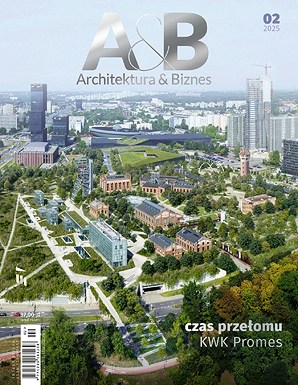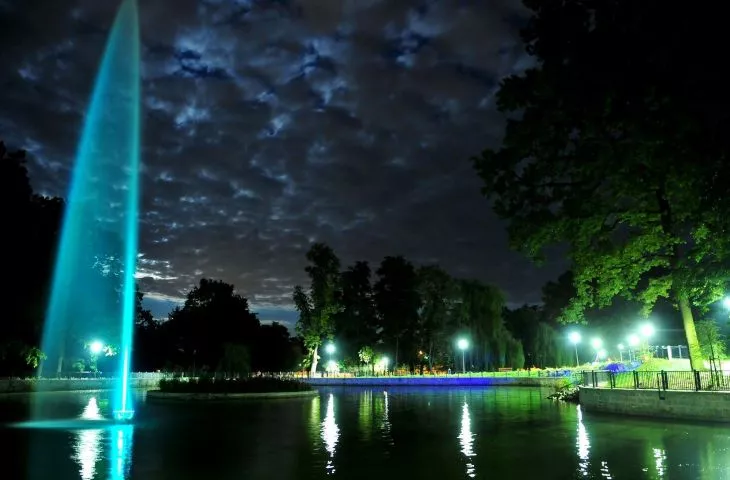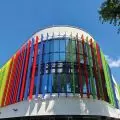Another winning project selected during the 14th edition of the Society of Polish Town Planners' competition for the best urban and architectural projects in Poland is therevitalization of green areas in Świdnica. This investment received the first prize in the category of Revitalized Green Public Space, but there were also very critical voices in connection with this investment.
The revitalization in Swidnica was carried out with external funds from the Operational Program Infrastructure and Environment through the National Fund for Environmental Protection and Water Management in 2016-2019. The investment covered an area of 18 hectares including: Sikorskiego Park, for which the IKROPKA Landscape Architecture Studio was responsible (greenery) and PROGRESS Design and Investment Implementation Office (infrastructure), Central Park by Archiprojekt Włodzimierz Banaś, andSquare on the Square of the 1000th Anniversary of the Polish State developed by the L'art des Jardins Garden Art Design Studio.
Revitalized green areas in Świdnica
© Świdnica City Hall
park like a funfair
The revitalization of the Central Park was controversial, with the cleaning of watercourses, construction of fountains, reconstruction of the playground, footpaths and footbridges, making greenery plantings and renovation of the stairs and rosarium. The investment was originally supposed to cost 12 million zlotys, but in the end the cost reached more than 20 million. However, it is not the economic issues that arouse the most criticism, but the issue of removing more than 200 trees and the way the park was lit. A total of 251 lanterns and 97 light points were installed in the small park, which drew criticism from Dr. Eng. arch. Magdalena Zienowicz and Dr. Eng. arch. country. Ewa Podhajska from the Wroclaw University of Life Sciences.
The fountain in the Central Park in Świdnica
© Świdnica City Hall
The experts compared the renovated Central Park to a funfair, claiming that the new lighting is harmful to plants, people and animals. They argued that the main drawbacks of the lighting, which can bring undesirable effects to humans and the existing environment, include overexposure of the park, improper selection of lighting fixtures and inappropriate choice of color temperature of light sources. On the other hand, the issue of tree cutting caused an outcry during a debate with specialists on greenery in Swidnica. According to Edyta Rosłon-Szeryńska, Ph.D., from the Department of Landscape Infrastructure at the Faculty of Horticulture, Biotechnology and Landscape Architecture at the Warsaw University of Life Sciences, the Central Park, in terms of nature, has lost a lot, and it is not something that Świdnica can boast about.
View of the Central Park in Swidnica
© Świdnica City Hall
restoring natural values?
Despite such an odium of criticism, the Society of Polish Town Planners decided to award the Świdnica revitalization project the first prize, and in the justification of the competition jury, which consisted of representatives of the Main Board of the Society of Polish Town Planners, the Presidents of the Field Branches of the Society of Polish Town Planners, the President of the Chamber of Architects of the Republic of Poland, Małgorzata Pilinkiewicz, and the President of the Association of Polish Architects, Bohdan Lisowski, we read that:
The award was given for the comprehensive revaluation of three park spaces, carried out in accordance with the tradition and history of the city. As a result of the revaluation, places integrating the local community were created for rest, recreation and entertainment. The multi-faceted renovation of Wladyslaw Sikorski Park, Central Park and the square on the 1000th anniversary of PP were part of a comprehensive program to revitalize green areas in Swidnica, aimed at restoring the natural and landscape values of park spaces and creating a new attractiveness of the city.
View of the alleys and fountain of the revitalized green areas in Świdnica
© Świdnica City Hall
runway instead of park
Also highly critical of the revitalization in Świdnica was Jan Mencwel, a social activist, urban activist and author of the book Betonoza. How Polish Cities Are Destroyed, who pointed to Park Central as an example of devastation of nature in the name of renovations and ill-conceived revitalization.
The Rose Garden in Świdnica
© Świdnica City Hall
Mencwel pointed out that the wild and overgrown banks had been concreted over and lined with stones, the trees had been cut down and replaced with lampposts, and so densely that residents began calling the park a "runway." A polemic ensued between Mencwel and Swidnica Mayor Beata Moskal-Slaniewska, in which she accused the author of manipulation and unreliability, stressing that she would not allow the city and its decisions to be insulted. Moskal-Slaniewska also pointed out that the controversial tree cutting was completely justified.
View of the Rose Garden in Świdnica
© Świdnica City Hall
needs of the local community
In this long-running discussion of Świdnica's revitalization, a kind of topping to the fire is the award in the competition of the Society of Polish Town Planners. It is worth asking here why, in such a negative atmosphere and in the context of such critical assessments, the award went to this very project. After all, the jury is well aware of what is good and what is bad revitalization. After all, it's not about mindlessly bringing degraded areas of the city out of crisis, although in this case, as it turned out, the previous state was more ecological and natural than the one created following the changes. Above all, it's about making such changes that will make it possible to function better in the revitalized place. And it is the needs of the local community that should be paramount here, and these, it seems, have been overlooked.



































